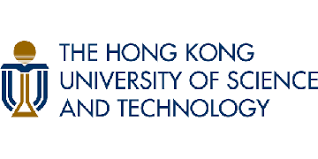Two Campuses
More proof that the Metaverse is reaching into every aspect of our lives was the Hong Kong University of Science and Technology (HKUST) announcing, on July 28th, its plan of establishing the world’s first physical-digital twin campuses in the Metaverse. Two campuses — in Hong Kong and Guangzhou, respectively — will help the university prepare for the new Web3 reality as well as improve teaching and learning experiences for both faculty members and students.
MetaHKUST
Called MetaHKUST, HKUST plans to build an extended reality (XR) campus for HKUST and its Guangzhou counterpart set to be open in September. As well as focusing on an immersive study experience, it will also serve as a holistic platform for all students, faculty and alumni to create, innovate and connect across campuses.
This is no surprise it started here, as HKUST is known as a pioneer in innovative education, and was one of the first higher education establishments to design and set up interdisciplinary teaching, e-learning, and novel pedagogy programs.

The MC2 team is now working on the construction of the first mixed reality classroom on the HKUST(GZ) campus. The approximately 2,400 square feet state-of-the-art classroom — set to be completed by September, will complement a similar classroom that will soon be constructed on the Clear Water Bay campus. The facilities will allow faculty and students of the two campuses to attend the same lecture at the same time in two paralleled physical spaces. Meanwhile, the team will also continue to enhance the virtual world’s display details in order to offer the best metaverse experience for the HKUST community.
According to the HKUST website, MetaHKUST is
a long-term development plan. During the initial stage, physical infrastructure such as XR classrooms, sensors, cameras and visualization tools will be installed, while members of the University will be invited to take part in a crowdsourced scanning of the physical campuses to help provide the necessary images for building the campuses’ virtual twins. After an ecosystem is established, the two Universities’ members can generate contents such as their own avatars, NFTs, tokens or virtual art works for the virtual world — some of which may also be viewed or used in the physical campuses with augmented reality (AR) technology. Exchange of information and administrative procedures are also expected to become more convenient, such that blockchain-secured diplomas or transcripts may be awarded in the forms of NFTs, while events like open day or graduation can be staged in parallel or in isolation to their physical ones.
Setting Standards
To realize this goal, the University will define the governance of the physical-digital world, setting standards and regulations for digital assets and unblocking technological bottlenecks to accelerate the development. Besides this, the university will select and fund proposals from HKUST members that could best utilize the MetaHKUST platform, and actively look out for collaboration opportunities on metaverse with other institutions.
“Hong Kong has all the elements required for the future-shaping development of Web 3.0 amid a fast convergence of our physical and digital worlds. As what I believe is the world’s first University to build a digital twin for our two campuses, HKUST is ready to take the lead to create a sustainable XR ecosystem to better supplement research and learning. The online-offline interaction will not only facilitate a genuine integration of the two campuses under the framework of ‘Unified HKUST, Complimentary Campuses’, but will also help realize the potential of metaverse in education,” said Professor Wang Yang, HKUST’s Vice-President for Institutional Advancement, who leads the MetaHKUST project.

Professor Pan Hui, meanwhile, Chair Professor of Computational Media and Arts at HKUST(Guangzhou), and Director of the Center for Metaverse and Computational Creativity (MC2) at HKUST, said:
“AR, as part of XR, is one of the primary technologies that blends digital content with physical environments. However, most AR applications are currently single-user and present significant constraints in terms of time and location. What we are striving to achieve here is the scaling up of technology to handle large-sized environments and massive multi-user experiences, which not only represents a primary challenge of our physical-digital vision, but also a key factor that differentiates MetaHKUST from other campuses’ metaverse initiatives.”
HKUST can see the changing tide. It’s only a matter of time before more universities around the world follow suit, moving their educational capabilities toward the Metaverse.
If you liked this article, please take a look at Top 5 Universities for Metaverse Research, which the Metaverse Insider published earlier in the year, and gives several examples of universities — three of which are in the Far East — that offer courses on Web3 and its associated verticals.
For more market insights, check out our latest Digital Twin news here.













